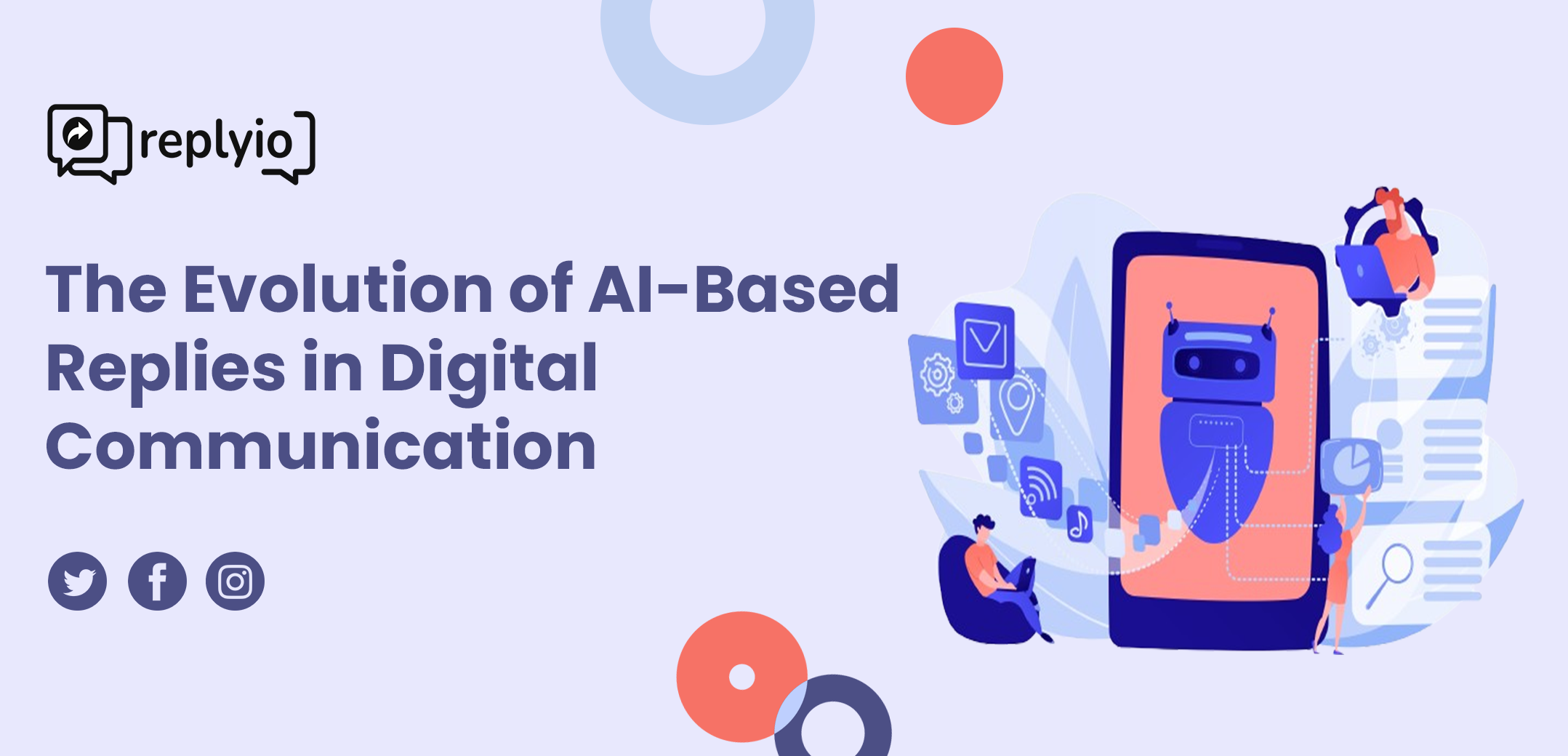Replyio
The Evolution of AI-Based Replies in Digital Communication
-
Sep 1, 2024
-
8 min read

In the fast-paced world of digital communication, automation has evolved from basic scripted replies to highly intelligent and dynamic interactions, thanks to the power of AI. What once started as rigid, pre-defined templates has transformed into flexible, personalized conversations that adapt in real-time. In this blog, we’ll explore the journey of AI-based replies and how they’ve shaped the way we communicate online.
1. The Era of Scripted Responses
The initial wave of automation in digital communication was centered around pre-scripted replies. These were commonly used in customer support, marketing, and outreach, where businesses could program a set of responses based on specific keywords or triggers.
For example, if a customer typed "help," they would receive a pre-written response offering basic solutions. These systems were convenient but limited in scope. Users often found themselves frustrated because the responses were generic and couldn't cater to complex inquiries or provide tailored solutions.
Though scripted responses were efficient, they lacked the depth and nuance required for more meaningful conversations. This is where the demand for smarter systems began to grow.
2. The Emergence of Machine Learning
As AI technology advanced, so did the need for systems that could handle more complex interactions. Machine learning (ML) introduced the next phase of evolution in AI-based replies. Unlike scripted replies, ML-powered systems could analyze large amounts of data to recognize patterns and learn from them.
By feeding these models with historical conversations, feedback, and user preferences, they could start generating more relevant replies. Machine learning enabled AI systems to "understand" context to some degree. Rather than simply responding based on keywords, they could now assess the tone, intent, and sentiment of a message.
This shift led to more personalized replies, increasing user satisfaction and engagement. Customer support bots, for instance, became more capable of providing detailed solutions or escalating issues to a human representative when necessary.
3. NLP: The Game Changer in Dynamic Responses
Natural Language Processing (NLP) brought another critical leap in the evolution of AI-based replies. With NLP, machines began to grasp the intricacies of human language—syntax, semantics, and even cultural nuances. This allowed AI to move beyond rule-based responses and generate replies that felt more human.
NLP gave rise to chatbots and virtual assistants capable of holding full-fledged conversations. Whether it’s asking Siri for directions, having a conversation with Amazon’s Alexa, or chatting with a customer service bot, these interactions started to feel much more fluid and human-like.
Now, AI systems could generate dynamic replies based not just on historical data but also on real-time input. They could adjust their responses based on the flow of conversation, making interactions more engaging and helpful.
4. The Role of Deep Learning in Hyper-Personalization
The next step in this evolution is deep learning, a subset of machine learning that mimics the neural networks of the human brain. Deep learning models are now being used to create even more dynamic and personalized replies, capable of understanding context on a much deeper level.
For instance, AI-powered tools today can track user behavior, preferences, and conversational history to craft replies that feel tailored to each individual. Whether you’re engaging with a brand on social media or receiving a follow-up from an email campaign, the communication feels more organic and less robotic.
Deep learning models continuously improve by learning from vast datasets and refining their outputs over time. This enables brands and businesses to deliver hyper-personalized experiences that foster stronger relationships with their audience.
5. AI in Multichannel Outreach
One of the most exciting areas where dynamic AI-based replies are making a difference is multichannel outreach. Whether through email, social media, or messaging platforms, AI can now craft customized replies for different channels, ensuring that communication feels seamless no matter where it's happening.
AI tools can track customer journeys across platforms, allowing businesses to maintain consistency in their messaging. For example, an AI-powered tool can analyze LinkedIn interactions to create personalized responses, then follow up with targeted emails that align with those initial conversations.
The ability to engage with users across multiple channels in a personalized and contextually relevant way is revolutionizing marketing and customer engagement.
6. What’s Next? The Future of AI-Based Communication
As AI continues to evolve, we can expect even more dynamic and human-like interactions. Advances in natural language understanding (NLU), contextual learning, and real-time data processing will drive AI’s ability to craft replies that not only meet but exceed user expectations.
In the future, AI systems may become so advanced that distinguishing between a human and an AI reply will be nearly impossible. We could see chatbots that are capable of understanding complex emotions, negotiating deals, or even replicating specific communication styles tailored to individual users.
At the same time, ethical considerations around transparency and user consent will become critical as AI takes on an increasingly prominent role in digital communication.
7. Conclusion
The evolution from scripted to dynamic AI-based replies marks a significant shift in digital communication. What started as a tool for efficiency has become a means of delivering deeply personalized, engaging, and intelligent conversations. As AI continues to evolve, the possibilities for enhancing human-to-machine communication are virtually limitless. Brands and businesses that harness these technologies effectively will lead the way in creating more meaningful, dynamic connections with their audiences.
In a world where communication is increasingly digital, the role of AI in facilitating those conversations will only grow—paving the way for a future where machines and humans can converse as naturally as two people chatting in real life.

